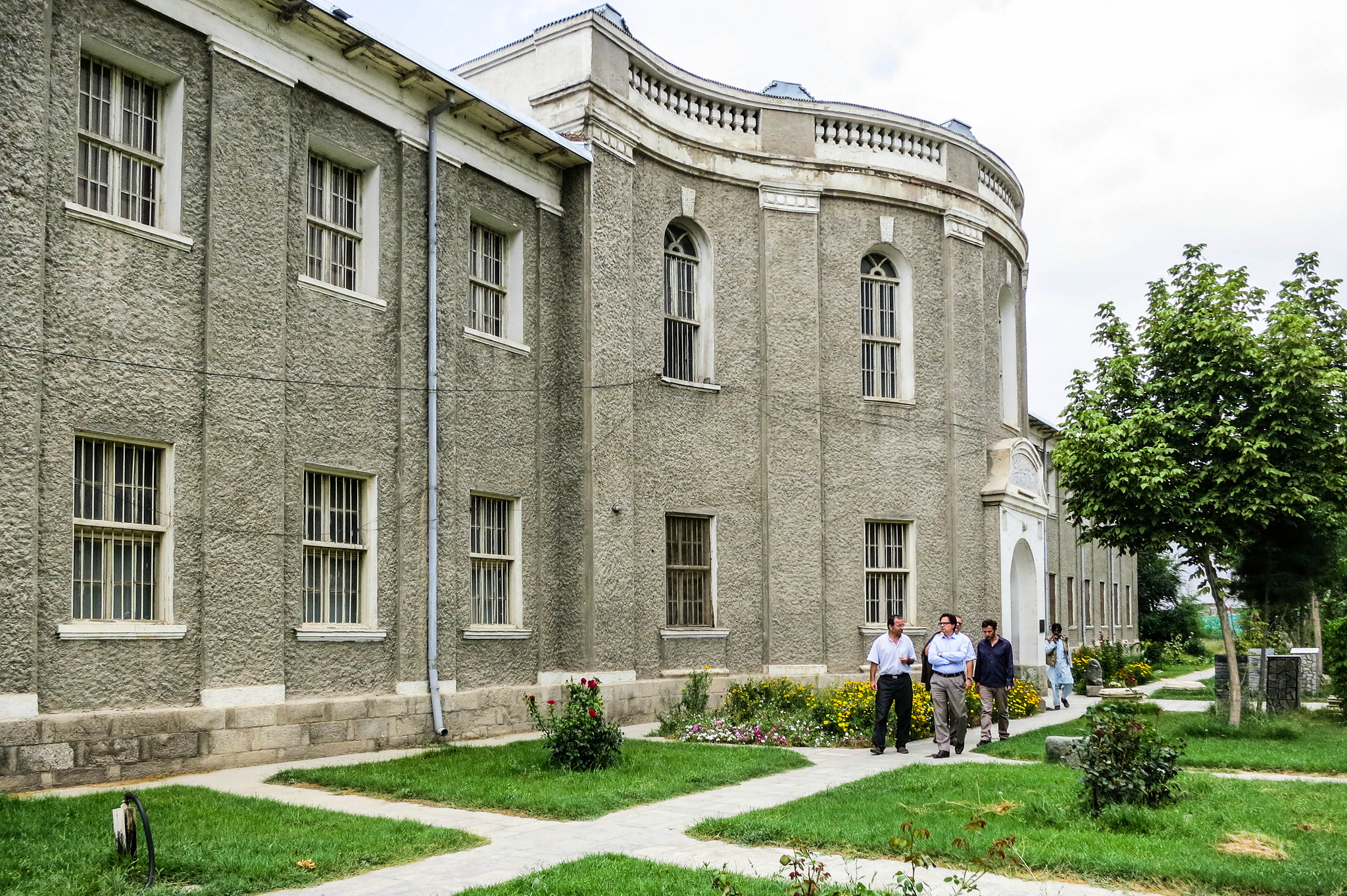As it prepares to mark its 100th birthday this year, the National Museum of Afghanistan is celebrating the past with its eyes firmly on the future. Originally founded in 1919 as a collection of objects from Afghanistan’s historic royal families, the National Museum of Afghanistan has been in its current home (a former municipal building) since 1931. Over the decades, the National Museum has seen and withstood a great deal, including the dramatic expansion of its collections as a result of archaeological work undertaken by the French Archaeological Delegation in Afghanistan. In addition, the museum has sustained serious damage from vandalism and looting during periods of unrest in the country.
Today, the National Museum of Afghanistan is planning for the development of a new facility: a modern building that will showcase Afghanistan’s rich history and complex contemporary identity in a 21st century context. As a first step toward this goal, the National Museum hosted the International Architectural Ideas Competition in 2012 to solicit bold ideas for the future facility, which will be located adjacent to the museum’s existing premises. The design brief was a somewhat unusual one. Based on the assumption that most of the participants in the competition would not be able to travel to Kabul in person, the design brief contained extremely detailed and comprehensive information about the building site, including images, drawings, diagrams, and descriptions. Submission criteria included a requirement for a visionary but culturally sensitive design, an emphasis on sustainability and the use of renewable energy, and careful attention to Kabul’s unique urban planning requirements.
A special jury—chaired by Afghanistan’s Minister of Information and Culture and composed of international architects, archaeologists, museum planners, and design professionals—considered a total of 72 design proposals from 31 countries, and announced the results at an awards ceremony in Kabul in September 2012. While considerable financing will still be needed to proceed with the construction of the new facility, the National Museum of Afghanistan and its partners (including major institutions such as UNESCO) are committed to this important project. Read on for a look at the winning design proposal, as well as the second and third prize entries and the honorable mentions.
First Prize: AV 62 Arquitectos (Spain)
According to the jury report, the Spanish design team of AV 62 Arquitectos achieved an excellent balance between form and function with its prize-winning entry, which is conceived as a deceptively simple shell arranged on a grid. The design’s distinctive, yet understated exterior appearance works in harmony with the surrounding context, and the interior spatial forms are responsive to the type of materials that will be displayed within them, making the design an inviting and welcoming one that encourages circulation and interaction with both the interior and exterior displays. The jury further praised the practicality of the design (which would be affordable and relatively simple to construct using local materials and labor), as well as its simplicity, flexibility, and approachable scale. Some of the most unique aspects of this design concept include an internal courtyard and ceiling baffles, which make effective use of Kabul’s intense natural light; parallel brick vaults on the roof; and the use of traditional materials such as decorative ceramic tile. In addition, the jury felt that the additions proposed by this design were the best at connecting the existing museum with the new facility.
Second Prize: Mansilla + Tuñón Arquitectos (Spain).
“Demonstrative” and “monumental” were some of the adjectives that the jury used to describe the design from Mansilla + Tuñón Arquitectos, which was awarded second prize in the competition. Expressed as a series of spatial volumes arranged in a grid formation, the exterior profile of the design is larger and more sculptural than the first-place entry and is clearly visually responsive to the backdrop of the nearby mountains. While the jury appreciated this larger vision, they also felt that the construction costs for this design would be significantly higher. Furthermore, they felt that some aspects of the design, such as its relationship with the existing museum and the design references to historic Afghan architecture, could have been more fully developed.
Third Prize: fs-architekten, Paul Schröder Architekt (Germany)
The jury praised the strong, dramatic, and creative architectural statement of this free-form design, which earned third prize in the competition. The sculptural massings and volumes that comprise the design allude to the adjacent mountains and transform the building into a destination in its own right. The design idea demonstrates integrity when it comes to the collections to be housed. Strong, protective walls surround different exhibition rooms, while lighter, linear circulation spaces between high walls evoke the public routes of the region’s historic cities. From a practical perspective, however, potential problems with this design include its size, complexity, and monumentality, particularly the inclusion of a large glazed atrium space.
Honorable Mentions
Three honorable mentions, each of equal ranking, were awarded to IAN+ architecture & engineering (Italy), Lawrence and Long Architects (Ireland), and Luisa Ferro, Architect (Italy).

